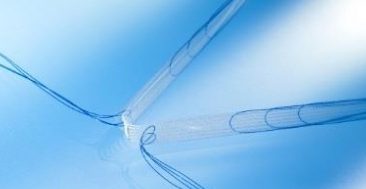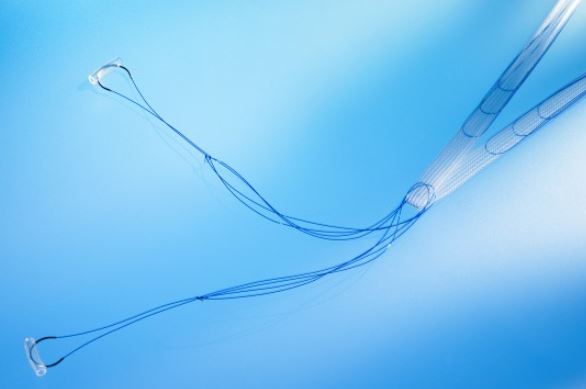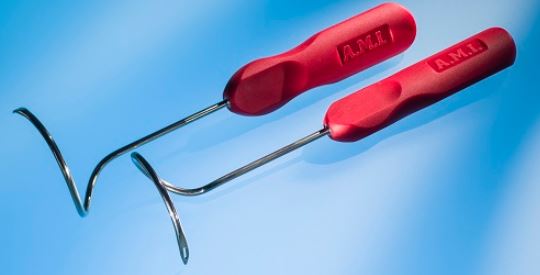Customized Treatment for Female SUI
The A.M.I. TOA (Trans Obturator Adjustable) and TVA (Trans Vaginal Adjustable) Slings are equipped with two groups of integrated sutures, which are left outside the skin following surgery and enable optimal fine-tuning of tension up to five days post-operatively, with active participation from the patient. One group of sutures can be pulled down to reduce tension if there are signs of urinary retention, while the other can be pulled up to increase tension if incontinence persists. Once the appropriate adjustments have been made, the sutures are removed. The option of post-operative adjustment has been proven particularly effective for high-risk groups (e.g. combined SUI and voiding dysfunction), severe SUI or patients in whom previous suburethral sling implantation has failed.
Video
Literature
Female Stress Urinary Incontinence: Clinical Efficacy and Satisfaction After Transobturator Adjustable Tape Sling. An Observational Longitudinal Cohort Study TITO SILVIO PATRELLI, PHD, MD1,2, SALVATORE GIZZO, MD3, MARCO NOVENTA, MD3,ANDREA DALL’ASTA, MD1, ANDREA MUSARÒ, MD1, RAFFAELE FAIOLI, MD1, GIULIANO CARLO ZANNI, MD2, GIOVANNI PIANTELLI, MD1, ADOLF LUKANOVIC, MD4, ALBERTO BACCHI MODENA, MD1, AND ROBERTO BERRETTA, MD, PHD1 1University of Parma, Parma, Italy 2Vicenza General Hospital, Vicenza, Italy 3University of Padua, Padua, Italy 4University of Ljubljana, Ljubljana, Slovenia Abstract We performed an observational longitudinal cohort study on patients affected by stress urinary incontinence (SUI) and surgically treated with a transobturator adjustable tape sling (TOA) in order to evaluate this surgical procedure in terms of efficacy, safety, quality of life (QoL) improvement, and patient satisfaction. For all patients, we recorded: general features, preoperative SUI risk factors, obstetrics history, preoperative urodynamic tests, intraoperative/ postoperative complications, number of postoperative sling regulations, postmicturition residue, and hospital stay. All patients were asked to complete the validated short version of the Urogenital Distress Inventory (UDI-6) questionnaire 18 months after discharge to evaluate the efficacy of the TOA system. We added 2 adjunctive items to the UDI-6 in order to evaluate patient satisfaction and QoL. All 77 surgical procedures were performed under locoregional anesthesia without complications. Postoperative TOA regulations were performed in 46.8% of patients immediately after the procedure and in 14.3% during hospitalization. Before discharge, postmicturition residue was negative in 67 cases and less than 50 cc in 10 cases. Mean hospital stay was 2.18 days. From the questionnaire evaluation, we found that after the procedure, 90.9% of patients showed a complete regression of urinary symptoms, 1.3% obtained considerable relief from preoperative symptoms, and 6.6% reported poor or absent symptom improvements; 75.3% of patients were totally satisfied and 5.2% totally disappointed. The possibility of modulating postoperative sling tension and reusing the surgical materials in association with short hospitalization as well as high patient satisfaction render TOA a safe, effective, and low-cost technique for the treatment of female SUI. Surgical Innovation 2014 May DOI: 10.1177/1553350614535855



